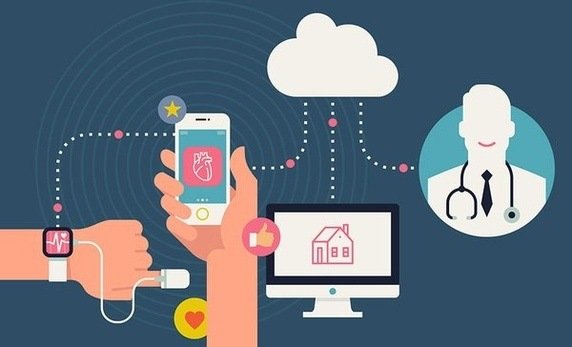In today’s digital healthcare landscape, Electronic Health Record (EHR) applications have become an essential tool for medical professionals, clinics, and hospitals.
These apps streamline data management, reduce paperwork, and enhance patient care by offering accurate, secure, and accessible medical information. With the growing demand for digital transformation in the medical sector, building an EHR app requires thoughtful planning, strong data privacy measures, and a user-focused approach.
One crucial element in its development is integrating the right features that deliver efficiency, compliance, and usability.
Why EHR Apps Are Becoming Essential
Healthcare organizations are increasingly shifting from paper-based record-keeping to digital systems. This shift allows doctors to access patient history faster, reduces medication errors, improves communication between departments, and supports remote consultations. EHR systems also help meet local and global medical regulations, improving overall healthcare accessibility.
As the need for digital medical records grows, more providers are exploring modern platforms that offer mobile access, interoperability, automation, and analytics. To build an effective EHR app, developers must include essential features that support both clinical workflows and patient engagement.
Core Features Required in an EHR App
1. Patient Information Management
At the heart of every EHR app lies patient profile management. This feature securely stores personal details such as medical history, allergies, lab reports, prescriptions, demographics, and past treatments. The information must be easily editable, organized, and accessible to authorized users. Allowing patients to update selected information can also improve accuracy and engagement.
2. Scheduling and Appointment Management
Integrating an appointment scheduling system helps streamline operations for physicians and patients. Features like automated reminders, calendar integration, no-show tracking, and telemedicine appointment support provide seamless experiences. Staff should also be able to manage cancellations, modify bookings, and prioritize urgent appointments.
3. ePrescriptions
Electronic prescriptions reduce manual writing errors and improve communication between healthcare providers and pharmacies. This feature allows doctors to input prescriptions digitally and send them directly to connected pharmacy systems. Error alerts, drug interaction warnings, and dosage guidelines help enhance patient safety.
4. Lab Integration and Test Results
EHR apps must support integration with diagnostic centers and labs. Automated test result uploads save time and reduce the risk of manual entry errors. Built-in tracking ensures doctors and patients receive notifications when results are available, and users should be able to access historical lab data for comparison.
5. Secure Document Storage and Sharing
An EHR system generates and receives large volumes of medical documents, including reports, imaging, and consent forms. A secure document library supporting various formats ensures records are easy to store and retrieve. Sharing features with controlled access, time-sensitive download links, and role-based permissions add an extra layer of security.
6. Compliance and Data Security
Maintaining compliance with regulatory frameworks is one of the most crucial elements when building an EHR app. Frameworks like HIPAA, GDPR, and HL7 define strict rules for data storage, access, and transfer. Strong authentication systems, encryption, access logs, and audit trails enhance security.
Developing a solution that meets such compliance standards often requires expertise from a skilled healthcare app development company capable of navigating these complex requirements.
7. Interoperability and API Integrations
A successful EHR app must integrate with external healthcare systems, devices, and third-party platforms. Interoperability ensures that patient records can be securely exchanged across hospitals, labs, pharmacies, insurance systems, and wearable health trackers. Support for HL7, FHIR, and DICOM standards is essential to ensure seamless data communication across platforms.
8. Role-Based Dashboards
EHR applications must offer customized user dashboards depending on the user type—doctor, patient, nurse, administrator, or pharmacist. Tailored interfaces improve workflow efficiency and reduce information overload. For example, doctors may need a treatment summary, while patients may need access to history and reminders.
9. Real-Time Notifications and Alerts
Automated alerts help prevent missed appointments, track medication adherence, notify abnormal lab results, and update users of critical events. Push notifications, SMS, and in-app alerts improve engagement and allow healthcare staff to respond faster in emergencies.
10. Analytics and Reporting Tools
Data analytics can help healthcare professionals track patient progress, identify risk patterns, optimize staff efficiency, and support clinical decision-making. Reports may include clinical performance metrics, appointment trends, and medication compliance tracking. With time, predictive analytics supported by AI can help prevent complications or chronic disease flare-ups.
Optional but Valuable Advanced Features
-
Telehealth and video calling
-
Wearable device data synchronization
-
Voice-enabled data entry
-
Medication barcode scanning
-
Insurance and billing integration
These features improve user experience and help the application evolve into a complete digital healthcare ecosystem.
Development Considerations
Building an EHR app requires attention to scalability, compliance, and future-proof architecture. Many providers invest in custom healthcare app development to ensure their system adapts to evolving workflows, regulations, and medical requirements rather than relying on generic software.
Choosing experienced developers who provide reliable healthcare app development services ensures the product includes secure frameworks, intuitive UX, strong backend architecture, and full interoperability support.
For organizations seeking digital transformation, investing in the right healthcare app development solution helps improve patient engagement, efficiency, and operational workflows.
Conclusion
Electronic Health Record applications are becoming central to modern healthcare systems. Building a robust EHR solution requires integrating features such as patient record management, interoperability, ePrescriptions, appointment management, reporting tools, and strong security compliance. As the healthcare industry moves toward digital-first models, EHR platforms will continue evolving to support remote care, automation, and data-driven medical decision-making.
To create a secure, reliable, and future-ready platform, organizations must focus on the right features and partner with experts who understand both technology and healthcare compliance. With the right approach, an EHR app can transform patient care and lead the way toward a smarter, more efficient medical ecosystem.



